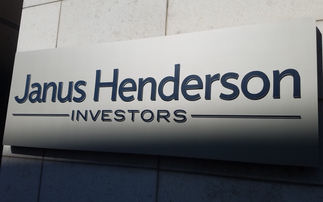
At Invesco, we spend a considerable amount of time thinking about portfolio construction. For some of our multi asset portfolios, this means thinking about active and passive investment styles; an old-age and perhaps controversial debate, as proponents on each side are equally convinced that their approach is superior.
While tempting to make an ‘all-or-nothing' active vs passive decision, we believe investors should explore the possibility of combining both approaches, thus allowing their portfolios to benefit from the advantages that each have to offer.
The view on passive
Passive funds - arguably one of the most revolutionary innovations in investment history - have grown in popularity in recent years.
Their numerous benefits have been widely documented. Amongst other things:
· They offer an affordable way to access markets.
· The post-GFC (global financial crisis) period has been highly conducive for passive indices to outperform their active counterparts.
· The range of available passive instruments has increased considerably (e.g. geography, sector, duration) giving investors a wider investment choice.
Nevertheless, passive management is not a cure-all solution. Investors should take note of some of its limitations, including but not limited to:
· The inability to outperform "the market" in rising and, particularly, in falling markets.
· In volatile times, the tracking error of passive indices tends to increase, making their performance less predictable.
· Passive indices are often tainted with construction biases, such as a high concentration risk in a limited number of securities.
The view on active
While passive managers seek to own all the securities in a given index, active managers select specific investments based on an assessment of their worth. Therefore, rather than "owning the market", active management aims to "beat the market."
The principal criticism of active management is well known: it is more expensive than passive investing yet has often delivered less performance. So, when and why is active management likely to realise its full, market-beating potential?
Arguably, this should occur in periods of increased market turbulence when there is more dispersion between stock performance. We saw this happen, for example, in the wake of the dot-com bubble burst and, more recently, at the height of the COVID-19 pandemic and after last year's market correction.
Relatedly, a further appeal of active management is that, unlike passive investing, it recognises the innate inefficiency and irrationality of markets and their participants. Such insights could be particularly useful when exploring opportunities in more specialised areas such as small and mid-cap equities, emerging markets and corporate bonds.
The case for a blended approach
Because each strategy has its own strengths and drawbacks, we think investors should utilise the best of both worlds by employing a blended approach.
Taking full account of the relative pros and cons, we believe it can be advantageous to invest passively where there is an implementation (easy access to a suitably diverse range of investments) or cost (results similar to active management but with lower fees) advantages and actively in less efficient markets where there tends to be more scope to make a difference in performance.
Crucially, none of this is to suggest there is a definitive balance to be struck between both investment styles. Depending on market conditions and other considerations, any number of blends of the two may prove effective.
The key point is that the need for creative and flexible portfolio construction and asset management is greater now than it has been for a long time and that what worked well in the past might not work so well now or in the future.
Find out more
Invesco's heritage in managing multi asset investments for our UK clients goes back over 25 years. Explore our range of discretionary and advisory model portfolio services, which consider the topics discussed in this article, and turn our expertise into your edge.
Investment risks
The value of investments and any income will fluctuate (this may partly be the result of exchange rate fluctuations) and investors may not get back the full amount invested.
Important information
This article is for Professional Clients in the UK and is not for consumer use.
Views and opinions are based on current market conditions and are subject to change.
This is marketing material and not financial advice. It is not intended as a recommendation to buy or sell any particular asset class, security or strategy. Regulatory requirements that require impartiality of investment/investment strategy recommendations are therefore not applicable nor are any prohibitions to trade before publication.
Invesco Asset Management Limited, Perpetual Park, Perpetual Park Drive, Henley-on-Thames, Oxfordshire RG9 1HH, UK. Authorised and regulated by the Financial Conduct Authority.












